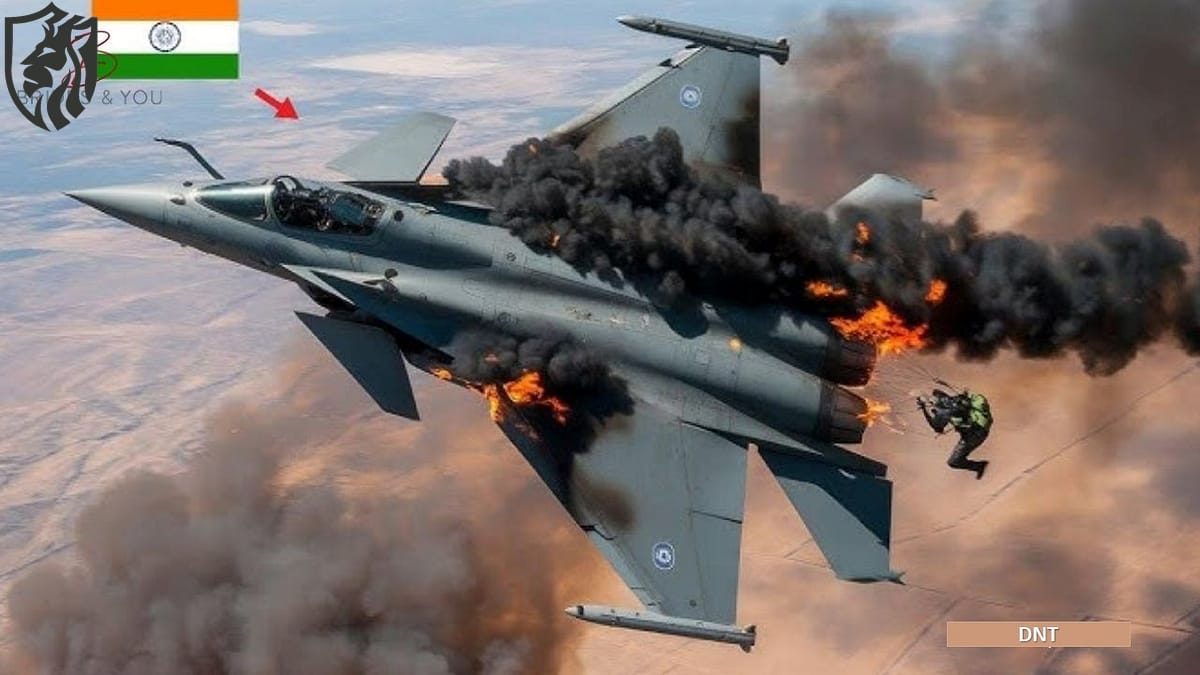
CG: IAF Rafale Loss during Operation Sindoor
India’s long-standing silence over Operation Sindoor has ended. The government’s sudden decision to award posthumous honors to over 100 military personnel has confirmed significant losses, including Rafale pilots and S-400 operators. Such an announcement marks a dramatic shift in narrative and raises critical questions about India’s high-end defense systems and military strategy.
Operation Sindoor: Unveiling the Hidden Conflict
On 6 July 2025, India quietly acknowledged casualties from Operation Sindoor. Launched in May against targets in Pakistan and Pakistan-administered Kashmir, this offensive has remained unconfirmed until now. Instead of an official press briefing, the announcement came through awards granted to fallen personnel, as reported by Geo News.
The losses include four Indian Air Force pilots—three of whom flew Rafale jets—and five operators of the S-400 system at Adampur Airbase. Reports suggest over 250 personnel died, with key losses in Udhampur, Rajouri, and Uri. These included members of the 10th and 93rd Infantry Brigades.

Operation Trigger and Scale
India launched Operation Sindoor following the 22 April 2025 Pahalgam attack that killed 26 civilians. India blamed cross-border militants and responded by targeting nine alleged terror camps. According to photonews.com.pk, the campaign featured intense aerial battles involving over 125 combat aircraft.
Pakistani sources said they shot down multiple Indian aircraft, including Rafales, despite India’s earlier claims of a successful and contained strike. Dassault Aviation initially denied these losses, dismissing them as misinformation. However, the award announcements suggest otherwise.
Military Losses and Shifting Narratives
Pakistani outlets like Dunya News have labelled the operation a failure, pointing to destroyed airbases and damaged equipment. Social media posts on X echoed these sentiments, though many claims remain unverified. Conversely, the Indian media framed the honours as dignified tributes to fallen heroes, avoiding scrutiny of the tactical outcomes.
Military analysts cited by capital.bg argue the loss of Rafales could serve as propaganda for Pakistan and China, especially if J-10 jets engaged them. Pakistani Defense Minister Khawaja Asif refuted accusations of foreign aid, asserting confidence in indigenous capabilities.
Context of Escalation and Secrecy
Operation Sindoor unfolded amidst delicate Indo-Pak ties. Just weeks prior, both countries signed a ceasefire, brokered in part by U.S. President Donald Trump. The swift shift from diplomacy to conflict underscores the volatility of the Line of Control (LoC).
India’s initial refusal to disclose details echoed previous campaigns like the 2019 Balakot strike. Even after the capture of Wing Commander Abhinandan, the government initially downplayed the losses. Similarly, the honours now reflect both national pride and pressure to acknowledge reality.
Performance of Rafale and S-400 Under Fire
India deployed its most advanced systems in Operation Sindoor. With its AESA radar, SPECTRA jamming suite, and Meteor missiles, India expected the Rafale fighter to dominate. However, the confirmed loss of three Rafale pilots indicates these jets faced unexpected resistance.
According to Livemint, a French intelligence report suspects China spread disinformation to discredit the Rafale, possibly to promote its J-20 stealth fighters. Dassault Aviation blamed at least one Rafale loss on technical malfunction.
Indian Defense Secretary RK Singh claimed Pakistan’s losses outweighed India’s. Still, other reports mention connectivity failures in India’s AWACS network as a possible reason for the downing of three Rafales, one MiG-29, and one Su-30.

Meanwhile, the S-400 Triumph system—designed to intercept threats at 250 miles—also faced challenges. Five operators died at Adampur, raising doubts about its effectiveness. Pakistan may have used drones or cruise missiles to exploit weak spots. Posts on X allege S-400 batteries were destroyed, though these remain unverified.
Equipment Reliability and Strategic Setbacks
India’s $8.7 billion Rafale and $5.4 billion S-400 acquisitions were meant to deter aggression. Compared to Pakistan’s JF-17 or China’s HQ-9, these platforms offered technological superiority. However, Operation Sindoor exposed gaps in training, coordination, and system reliability.
Furthermore, Russia’s hesitance to provide S-400 source codes—especially due to Ukraine war obligations—could delay upgrades and maintenance. Skilled operators are essential for its effectiveness, making their loss even more significant.
Geopolitical and Domestic Impacts
India’s setbacks have strategic implications. Pakistan has seized the moment to promote its self-reliant defense posture, emphasising the role of JF-17s and locally developed weapons. China, reportedly involved in information warfare, aims to destabilise India’s partnerships with France and Russia.
Internally, the Modi government faces backlash for withholding information. Critics compare the delayed acknowledgement to previous incidents, warning of eroding public trust. Awarding medals may help restore morale, but it also highlights the high cost of escalation in Kashmir.
The Toll on Soldiers and Families
Operation Sindoor Legacy is not just strategic—it is deeply personal. The honored soldiers represent India’s best-trained personnel. Their deaths reveal the risks of modern warfare in disputed terrains.
Families of the fallen, reportedly advised to avoid public tributes, must now reconcile grief with state-managed recognition. Awards offer respect but cannot mask the earlier silence around their sacrifices.
Strategic Lessons and Future Directions
The losses in Operation Sindoor prompt a reevaluation of India’s defense doctrine. Rafale’s failure to maintain air superiority and the vulnerability of the S-400 suggest urgent needs for tactical upgrades, better AWACS integration, and improved personnel training.
India’s outreach to nations like Greece—offering S-400-evading missiles, as reported by The Economic Times—signals strategic recalibration. However, regional dynamics remain complex. Mutual suspicion between India and Pakistan persists, even as the two nations strive to modernise their arsenals.
As India reflects on Operation Sindoor, one question remains: will the military embrace transparency and reform or continue the cycle of secrecy and reactionary escalation?
References
- https://www.geo.tv
- https://photonews.com.pk
- https://capital.bg
- https://www.dawn.com
- https://www.livemint.com
- https://www.theprint.in
- https://www.hindustantimes.com
- https://www.india-today.in
- https://www.economictimes.indiatimes.com
- https://www.nation.com.pk
- https://www.defensenewstoday.info/
- India to Fast-Track Launch of 52 Military Satellites for Border Surveillance
- Pakistan claims the S-400 was hit by JF-17 hypersonic blitz in Punjab






